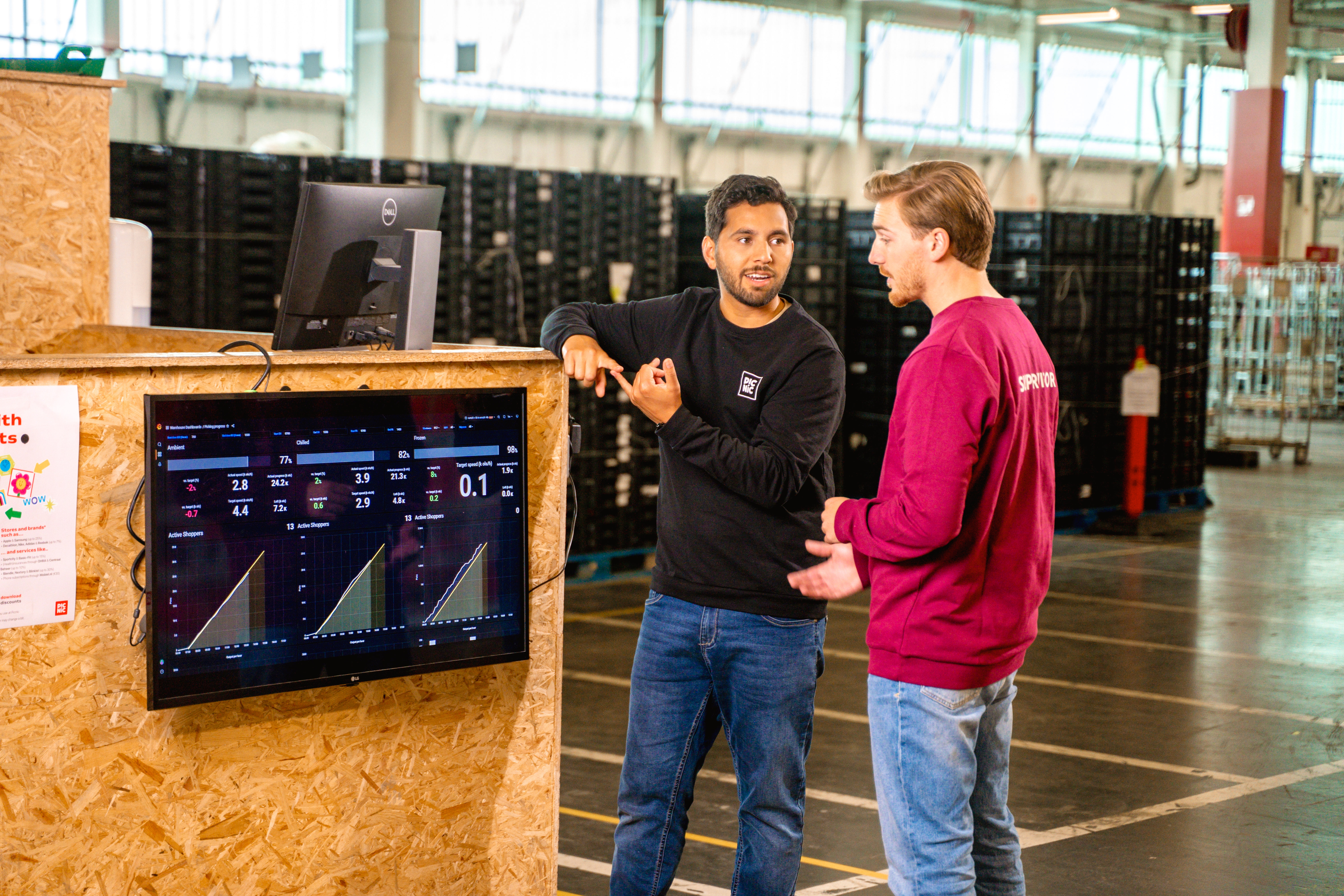Combining e-commerce and urban logistics, Picnic is a tech company based in Holland specializing in online grocery delivery. As the world’s fastest-growing online supermarket with a unique business model and a highly engaged customer base, its mission is to make grocery shopping simple, fun and affordable for everyone. To remain in the lead, Picnic prioritizes being technologically advanced and empowering employees to streamline their own workflow.
The approach has paid off. The company has seen explosive expansion from a small team in one city to 15,000 workers with one million active customers in the Netherlands, France and Germany just seven years later. Adopting Slack early on has supported this growth. The tool has proven to be the perfect fit, meeting Picnic’s need for scalable technology, streamlined processes and simple communication among teams.
“Back then, Slack was a challenger, a platform that was trying to do things a little differently, and that fit really well with the DNA of Picnic,” says Maxim Oei, a strategy analyst in tech at Picnic. “And since then, it’s matured with us.” Nobody uses email internally, and all 15,000 Picnic employees are on Slack. The company even supports external collaboration with partners, vendors and other guests through Slack Connect.

“All communication is via Slack. It’s impossible not to use it.”
Making it all fit with made-to-measure solutions
At Picnic, all 10,000 warehouse workers and delivery drivers use Slack on their phones or other devices. “Slack is the only way they can check their work schedule, change their shift, request a day off or see team announcements,” says Oei. “All communication is via Slack. It’s impossible not to use it.”
Most of the existing apps at Picnic are custom-built, so there is no need for a separate user interface for any work-related actions or communications. Even its shift scheduling is an in-house solution that takes into account things like experience and tasks requiring specific skills or abilities. “Other scheduling solutions do exist, but we believed that we could do it more efficiently ourselves via customized Slack apps,” Oei says.
Another custom application developed for operations tracks how safe the company’s thousands of drivers are on their routes and sends them a daily report. Drivers also receive weekly reports with feedback from customers that can be added to their performance development goals, if required.
“We’ve created a direct feedback loop using Slack, making it possible for operations to receive information really quickly and immediately take action," states Oei. “And we wanted uniform messaging. There are no separate platforms for safety scores, customer feedback or scheduling. You get a summary of everything in one place.”
Out of 393 apps used by the company, only 86 are off-the-shelf solutions from the Slack App Directory. This includes Google Calendar for appointments, Jira for basic interactions on tickets, and Workday for reminders and approvals of requests. But as these apps mostly push employees out of Slack, the priority is on building custom apps internally. “We want to keep employees within Slack as much as possible, rather than having notifications that take you out of Slack,” explains Oei.
Enabling efficiencies through empowered individuals
With several distribution centers and offices in three countries, there is dedication at Picnic to ensure consistency. “We try to ensure that things are similar everywhere and we don’t reinvent the wheel,” says Oei. “At the same time, there’s a huge national or even local component to many of the things we do. Every fulfillment center is its own little world, and every hub, its own little community.”
Picnic’s focus on supporting small hubs and individual workers, while contributing to large-scale streamlining and efficiency, means that it’s encouraging employees to find solutions that suit them best. It’s so easy to customize an app or use Slack’s no-code Workflow Builder that any member of staff can take initiative to streamline their work.
For example, the company chef, based in the Amsterdam office kitchen, created a custom workflow that is being used to reduce food waste while preparing for catering events. The workflow helps the team of chefs collect information about the catering event, such as how many people will attend and any dietary restrictions, so that the team can plan the meals accordingly.
Picnic currently uses thousands of active workflows created by employees themselves, illustrating the culture of empowerment, where anyone can automate anything to continuously improve their own work and, therefore, the business. And there is no one app or workflow that is singularly important.
“Slack as a whole is critical to running our business,” explains Oei. “But we try to foster a feeling of confidence with automations, building workflows and creating standard communication. The fact that anyone can build one without any programming experience is exciting. But what’s also powerful is that simple automation can grow into something more substantial for the business. It provides an option for incremental improvement and Slack is really well-suited for us to support new developments through their lifecycle.”
“All incident management, regardless of root cause or which teams are needed to solve it, is done via Slack.”
Streamlining incident management
Picnic’s tech team of 350 people, all based in the Netherlands, support the entire operation within three countries, which can be challenging when incidents happen. But whether it’s a simple delay, like a supplier missing a deadline, or a system malfunction, it’s all addressed the same way.
“All incident management, regardless of root cause or which teams are needed to solve it, is done via Slack,” says Oei. “Other companies would have a first-line help desk where this process gets started, but we don’t have that. We have Slack.”
Anyone at Picnic can raise an incident with a simple slash command in Slack. They simply answer four questions that work as a decision tree. This includes estimates of how many people are affected and what the problem is. It takes just seconds to do.

The selections and a short description trigger notifications for the right team, whose members can adjust the incident severity, assign an owner and spin up a dedicated incident channel that includes an automatically created Google Meet link. All of this can be achieved with a click of a button on the initial message, allowing the team to begin working on a resolution right away.
What’s more, to streamline its processes, Picnic recently began employing ChatGPT to create a summary of the incident channel conversation and using it as the starting point of an incident report. This huge, but simplified, operation is a long way from the original fledgling incident management solution that started as standardized communication on one Slack channel. Just like the other custom apps, it shows what’s possible with scaling and growth.
Simplified growth through scalability
What made Slack the right choice for Picnic when it was just a one-city operation, remains true for a three-country business that keeps expanding. Slack supports growth, creativity and inventive solutions to specific problems while also keeping communication going.
“Slack scales really well," states Oei. “Not just in maturity, but also in remaining transparent. It allows everyone to remain in one workspace and collaborate, even though there are 15,000 of us now. The fact that this is possible with the same solution speaks to its versatility.”
As the company continues to grow, there are always plans for new Slack automations to decrease manual labor. There is also potential to use the AI currently applied for summarizing incidents to also scan other channels and provide updates to keep people well-informed. In the meantime, maximizing Slack’s potential is giving Picnic the edge it needs to keep growing.















